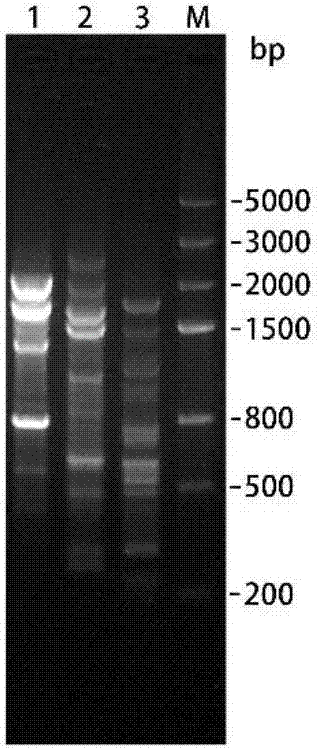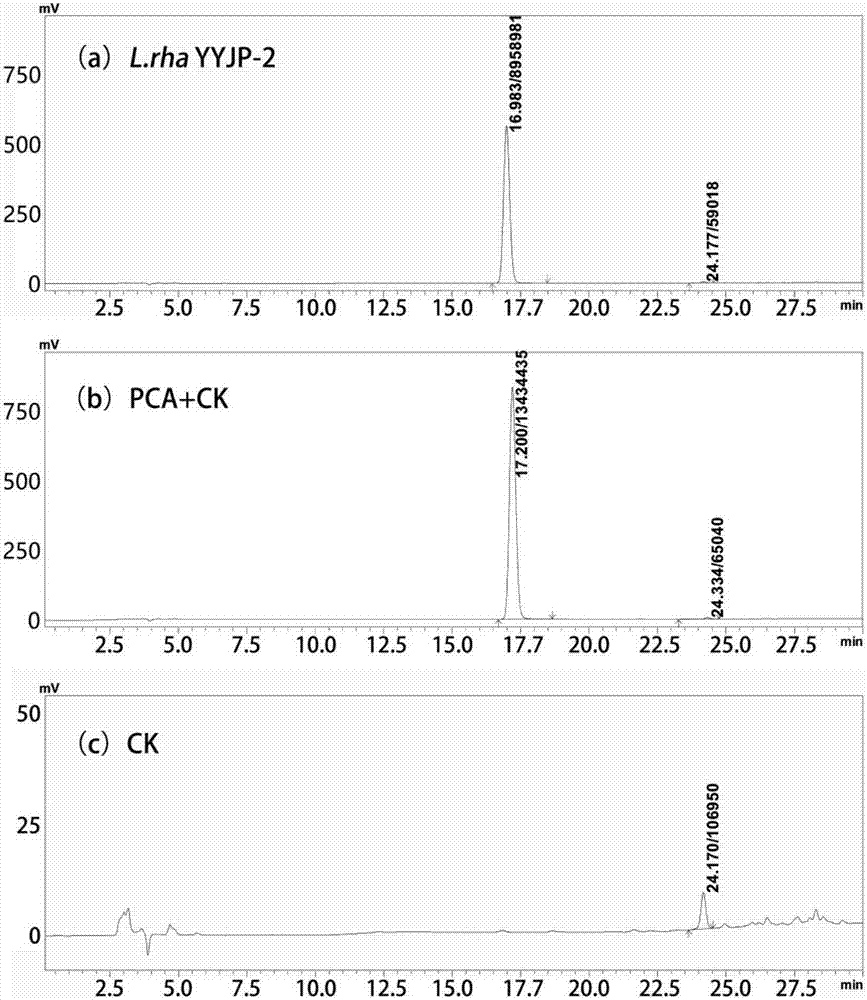Method for carrying out whole-cell catalysis on natural anthocyanin by utilizing microorganisms and transforming natural anthocyanin into protocatechuic acid and application
A technology of protocatechuic acid and microorganisms, which is applied in the field of bioengineering to achieve the effects of simple preparation, improved nutritional benefits, and improved catalytic efficiency
- Summary
- Abstract
- Description
- Claims
- Application Information
AI Technical Summary
Problems solved by technology
Method used
Image
Examples
Embodiment 1-5
[0033] In Examples 1-5:
[0034] The detection conditions of the high-performance liquid chromatography are as follows: 20 μL of sample injection, wavelength of 245 nm, flow rate of 1 mL / min, and mobile phase A: 1% formic acid in water. Mobile Phase B: Acetonitrile. Elution method: 0-4min A phase maintains 95%; 4-16min A phase 95% drops to 88%; 16-30min A phase maintains 70%; 30-35min A phase rises from 70% to 95%.
[0035] The test of the initial concentration of total anthocyanins adopts the pH differential method.
Embodiment 1
[0036] Example 1 Isolation and Identification of Lactobacillus rhamnosus YYJP-2
[0037] 1. Strain Isolation
[0038] (1) Lactobacillus rhamnosus YYJP-2 (L.rhamnosus YYJP-2) was isolated from traditional liquor fermentation koji. The specific separation method is as follows: fully shake the distiller's yeast with sterile distilled water to obtain a suspension, and use the doubling dilution method to dilute the suspension to 10 -3 、10 -4 、10 -5 and 10 -6 The sample solution was spread on the MRS plate and cultivated. After 2 days, the single colony was picked and purified twice by streaking on the plate, and the strains were preserved on the slant for future use.
[0039] (2) The Lactobacillus rhamnosus YYJP-2 (L.rhamnosus YYJP-2) obtained from the above isolation belongs to Gram-positive bacteria, and has large, creamy white, opaque, moist and smooth colonies on the MRS plate. A large amount of viscous carbohydrate material was produced in the broth test tube, manifested ...
Embodiment 2
[0044] The isolation and identification of embodiment 2 Lactobacillus casei KFL2 (L.casei KFL2)
[0045] 1. Strain Isolation
[0046] (1) Lactobacillus casei KFL2 (L.casei KFL2) was isolated from traditional liquor fermentation koji. The specific separation method is as follows: fully shake the distiller's yeast with sterile distilled water to obtain a suspension, and use the doubling dilution method to dilute the suspension to 10 -3 、10 -4 、10 -5 and 10 -6 The sample solution was spread on the MRS plate and cultivated. After 2 days, the single colony was picked and purified twice by streaking on the plate, and the strains were preserved on the slant for future use.
[0047] (2) Lactobacillus casei KFL2 (L.casei KFL2) obtained from the above separation is a Gram-positive bacterium, and has neat, white, opaque, smooth-surfaced colonies on the MRS plate, with a slightly sour taste.
[0048] 2. Strain identification
[0049] The genomic DNA of the above-mentioned isolated b...
PUM
 Login to View More
Login to View More Abstract
Description
Claims
Application Information
 Login to View More
Login to View More - R&D
- Intellectual Property
- Life Sciences
- Materials
- Tech Scout
- Unparalleled Data Quality
- Higher Quality Content
- 60% Fewer Hallucinations
Browse by: Latest US Patents, China's latest patents, Technical Efficacy Thesaurus, Application Domain, Technology Topic, Popular Technical Reports.
© 2025 PatSnap. All rights reserved.Legal|Privacy policy|Modern Slavery Act Transparency Statement|Sitemap|About US| Contact US: help@patsnap.com



